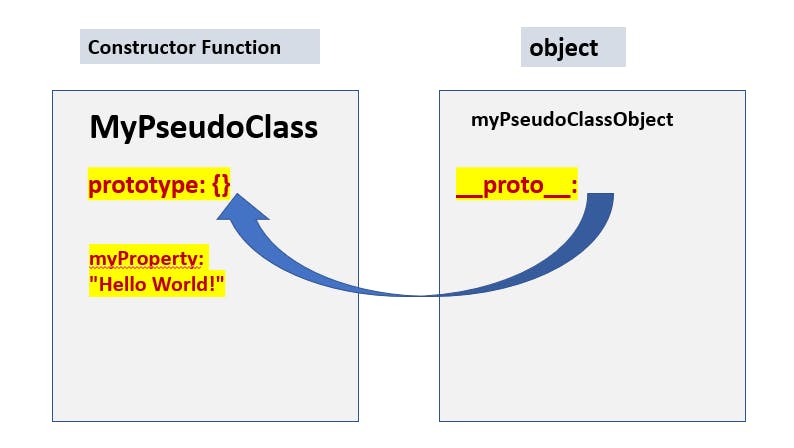3. About JS Objects...
As of ES5.1 classes did not exist similar to other programming languages like C++ or Java.
So how do we create objects?
- Via literals
var obj = {};
obj.myProperty = "Hello literal object!"
console.log(obj.myProperty);
- Via constructor functions
Its simply a JavaScript function.
function MyPseudoClass(){
this.myProperty = "Hello World!"
}
var myPseudoClassObject = new MyPseudoClass();
console.log(myPseudoClassObject.myProperty);
Each constructor function has a property named "prototype"(which JavaScript adds under the hood the moment the function is created) which is used to implement prototype-based inheritance and shared properties
Objects are created using the new keyword. Omitting the new keyword has its consequences that depends on the constructor. For example Date() produces a date string and new Date() produces a date object.
Whenever we create an object of a constructor function using the new keyword, JavaScript automatically adds a property named as __proto__ to the object and this property points to the prototype property of the constructor function.

Now that we have defined what constructor functions are and how are new object created from them related to these constructor functions we can revisit object creation via literals and see actually it uses the function constructor way of object creation under the hood. How? Here's how...
If you remember in the previous post of this series we had mentioned some special built-in objects that JavaScript has, one of which was the Object object. So when JavaScript encounter the {} notation of creating objects, it internally calls the function constructor of the built-in Object function as new Object(). This creates a new instance of the Object function constructor and assigns its __proto__ to prototype property of Object function constructor.
- Via Object.create
We shall explore this method of object creation separately in later post and then compare with the previous two methods we have seen just now.
In the next section we will explore prototypes and __proto__ in detail to understand its significance in the language.
References: https://www.ecma-international.org/ecma-262/5.1
